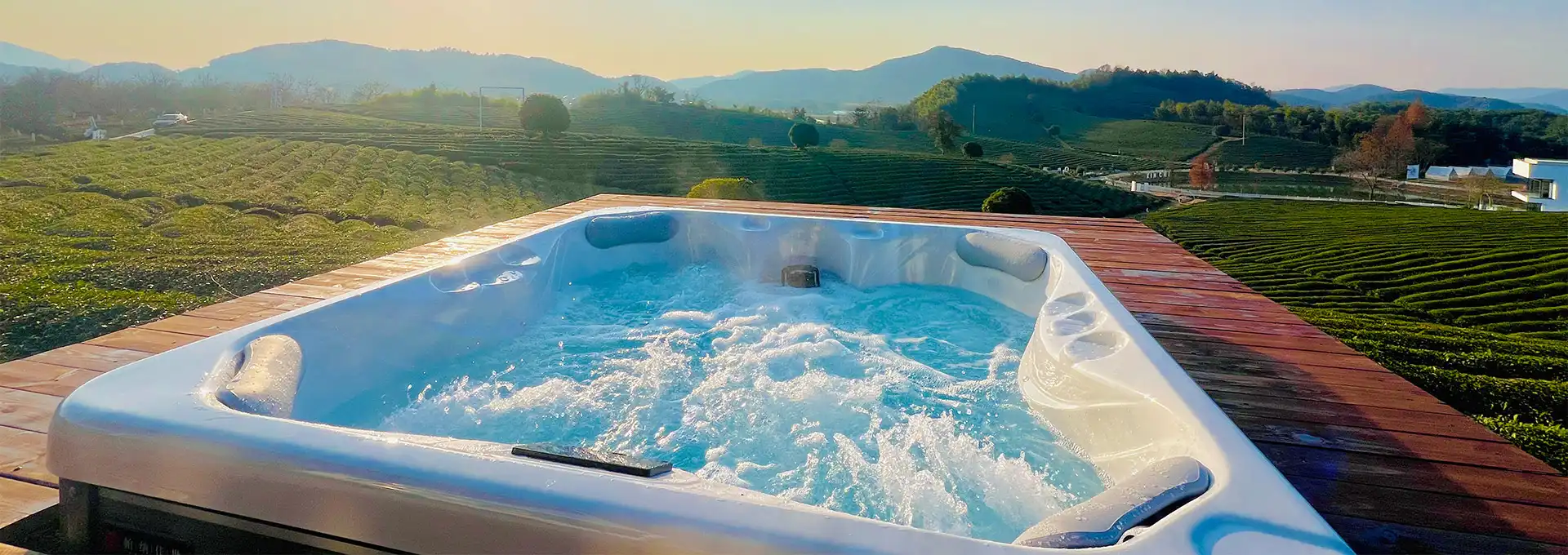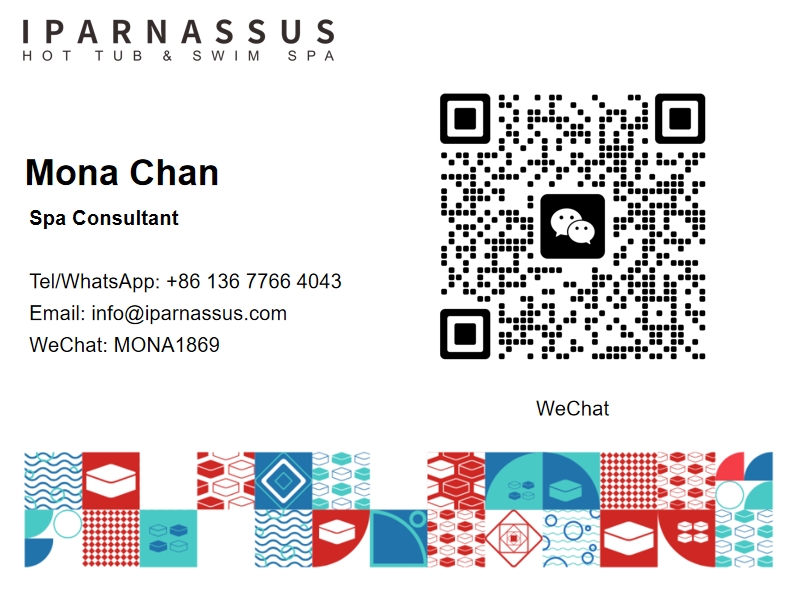How Often Should My Swim Spa Filter Run?
2024-12-19 16:55:43
Maintaining a clean and healthy backyard swim spa is essential for optimal enjoyment and longevity of your investment. One crucial aspect of swim spa maintenance is the proper operation of the filtration system. Many swim spa owners wonder about the ideal frequency for running their swim spa filter. In this comprehensive guide, we'll explore the factors that influence filter run time and provide practical advice to help you keep your swim spa in pristine condition.
What factors affect swim spa filter run time?
Several factors influence how often your swim spa filter should run:
- Usage frequency: The more you use your swim spa, the more often the filter needs to run. Heavy usage introduces more contaminants, requiring more frequent filtration.
- Bather load: The number of people using the swim spa affects the amount of debris and organic matter introduced into the water, necessitating longer or more frequent filtration cycles.
- Environmental factors: Outdoor swim spas are exposed to elements like leaves, pollen, and dust, which can increase the need for filtration compared to indoor units.
- Water volume: Larger swim spas with more water require longer filtration times to ensure thorough cleaning.
- Filter size and efficiency: The size and quality of your filter impact its effectiveness, potentially affecting how long it needs to run.
- Water chemistry: Proper chemical balance can reduce the load on your filtration system, potentially allowing for shorter run times.
Understanding these factors is crucial in determining the optimal filter run time for your specific backyard swim spa setup. It's important to note that while longer filtration times generally result in cleaner water, excessive filtration can lead to unnecessary energy consumption and wear on your equipment.
To strike the right balance, consider implementing a variable filtration schedule. For example, you might run the filter for longer periods during heavy-use seasons or after parties, and reduce the run time during periods of less frequent use. This approach allows you to maintain water quality while optimizing energy efficiency.
Additionally, regular maintenance of your filter can improve its efficiency, potentially reducing the required run time. This includes cleaning or replacing the filter cartridge according to the manufacturer's recommendations, typically every 4-6 weeks for cleaning and annually for replacement.
How long should a swim spa filter run each day?
The ideal daily run time for a swim spa filter can vary depending on the factors mentioned earlier. However, as a general guideline, most swim spa experts recommend running the filter for at least 8 to 12 hours per day. This duration ensures that the entire water volume passes through the filtration system multiple times, maintaining cleanliness and clarity.
Here's a more detailed breakdown of recommended run times based on usage patterns:
- Light usage (1-2 people, 2-3 times per week): 8-10 hours per day
- Moderate usage (3-4 people, 4-5 times per week): 10-12 hours per day
- Heavy usage (5+ people, daily use): 12-24 hours per day
It's important to note that these are general recommendations, and your specific swim spa may require adjustments based on its unique characteristics and your local environment. Some high-end swim spas come with programmable filtration cycles that allow you to set specific run times throughout the day, optimizing both water quality and energy efficiency.
To determine the most effective run time for your swim spa, start with the manufacturer's recommendations and adjust based on your observations of water quality. If you notice cloudy water or a buildup of debris, you may need to increase the filtration time. Conversely, if the water remains consistently clear with shorter run times, you might be able to reduce the filtration duration to save energy.
Many backyard swim spa owners find it beneficial to divide the total filtration time into multiple cycles throughout the day. For example, instead of running the filter for 12 consecutive hours, you might set it to run for 4 hours in the morning, 4 hours in the afternoon, and 4 hours at night. This approach helps maintain consistent water quality and can be more energy-efficient, as it allows the pump to rest between cycles.
Remember that proper chemical balance is crucial in supporting your filtration system. Regular testing and adjustment of pH, alkalinity, and sanitizer levels can help reduce the burden on your filter, potentially allowing for shorter run times while maintaining excellent water quality.
Can you run a swim spa filter too much?
While it might seem logical that more filtration would always lead to cleaner water, there are potential drawbacks to running your swim spa filter excessively. Understanding the balance between adequate filtration and overuse is crucial for maintaining your swim spa efficiently and economically.
Here are some considerations regarding excessive filter run times:
- Energy consumption: Running your filter pump continuously can significantly increase your energy bills. Modern swim spas are designed to clean the water effectively without requiring 24/7 operation.
- Wear and tear: Constant operation can lead to premature wear of pump motors and other components, potentially shortening their lifespan and increasing maintenance costs.
- Water temperature fluctuations: In some cases, extended pump operation can cause slight increases in water temperature, which may be undesirable, especially in warmer climates.
- Chemical imbalances: Overfiltration can sometimes lead to more rapid dissipation of chemicals, requiring more frequent additions to maintain proper water chemistry.
- Noise pollution: While most swim spa pumps are designed to operate quietly, continuous running can create ambient noise that may be bothersome, especially in residential areas.
To avoid these issues while still maintaining clean water, focus on optimizing your filtration schedule rather than simply maximizing run time. Here are some strategies to achieve this balance:
- Use a programmable timer: Many modern swim spas come with built-in timers that allow you to set specific filtration cycles. This feature enables you to run the filter during off-peak energy hours or when the swim spa is not in use.
- Implement variable speed pumps: These pumps can operate at lower speeds during filtration cycles, reducing energy consumption while still maintaining effective water circulation.
- Regular maintenance: Keeping your filter clean and replacing it when necessary can improve its efficiency, potentially reducing the required run time.
- Monitor water quality: Regularly test your water and adjust filtration times based on actual water quality rather than adhering to a fixed schedule.
- Consider alternative sanitization methods: Some backyard swim spa owners use ozone generators or UV systems to complement their filtration system, which can help maintain water quality with reduced filter run times.
It's also worth noting that some high-end swim spas feature smart filtration systems that automatically adjust run times based on usage patterns and water quality sensors. These systems can optimize filtration efficiency without requiring manual adjustments.
Ultimately, the goal is to find the sweet spot where your swim spa's water remains clean and clear without unnecessary energy consumption or equipment wear. This balance may require some trial and error, but with careful observation and adjustment, you can achieve optimal performance from your swim spa's filtration system.
Conclusion
Determining the ideal run time for your swim spa filter involves considering various factors such as usage patterns, environmental conditions, and the specific characteristics of your swim spa. While general guidelines suggest running the filter for 8 to 12 hours per day, it's essential to tailor this recommendation to your unique situation.
By understanding the factors that influence filtration needs, implementing a balanced run schedule, and maintaining your equipment properly, you can ensure that your swim spa remains clean, healthy, and energy-efficient. Remember that regular water testing, chemical balancing, and filter maintenance are crucial components of an effective swim spa care routine.
As you become more familiar with your swim spa's specific needs, you'll be better equipped to fine-tune your filtration schedule, striking the perfect balance between water quality and operational efficiency. This approach will not only enhance your enjoyment of the backyard swim spa but also contribute to its longevity and performance over time.
For more information on hot tub installations and to find out more about our products, please feel free to contact us at info@iparnassus.com.
References
- Swim University. (2021). How to Clean a Hot Tub Filter.
- Master Spas. (2022). Swim Spa Maintenance Guide.
- Hydropool. (2021). Swim Spa Maintenance Tips.
- Aqua Magazine. (2020). The Basics of Filtration.
- Endless Pools. (2022). Swim Spa Care and Maintenance.
- Hot Spring Spas. (2021). Hot Tub Filtration 101.
- Pool Research. (2022). How Long to Run Pool Filter.
- Swim Spa Guide. (2021). Swim Spa Maintenance: The Ultimate Guide.
- Bullfrog Spas. (2022). Hot Tub Filtration: Everything You Need to Know.
- Swim Spa Expert. (2021). Swim Spa Filter Maintenance.
Send Inquiry
Related Industry Knowledge
- Can Sitting in a Hot Tub Help You Lose Weight?
- Can You Put a Swim Spa Indoors?
- Can You Put Bath Salts in a Hot Tub?
- Will Insurance Cover Swim Spa?
- How Long to Fill a Hot Tub?
- What are Hot Tubs Used For?
- How to hook up solar to a swim spa?
- How Many Gallons of Water in a Large Hot Tub?
- How Much Space do I Need for a 5 Person Hot Tub in My Backyard?
- How Heavy is a 4 Person Hot Tub



